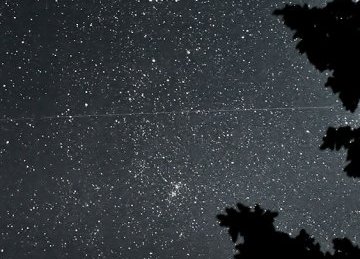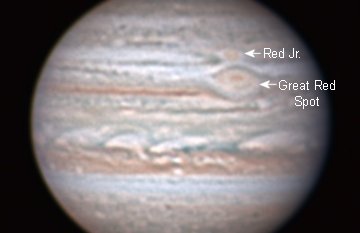 The Perseid meteor shower is coming. Would you like a call when it peaks? Sign up for Spaceweather PHONE.
The Perseid meteor shower is coming. Would you like a call when it peaks? Sign up for Spaceweather PHONE.
INFLATABLE SATELLITE: On July 12th, a Russian rocket blasted off with unusual cargo: an inflatable satellite named Genesis. Five hundred kilometers above Earth, Genesis expanded to full size (~9 meters wide), and is now visible in the night sky. On July 15th, Genesis cut across the starry skies of Divide, Colorado, where Ginger Mayfield took its picture:

"The satellite was about as bright as a 2nd magnitude star--very easy to see," says Mayfield.
Genesis belongs to Bigelow Aerospace, a private company with plans to deploy a manned space station in Earth orbit. The station would be assembled from inflatable modules. Genesis is a one-third scale prototype; it will circle Earth for five years while researchers study its performance and durability.
BLAST FROM THE PAST: Genesis is not the first inflatable satellite. NASA's 60s-vintage Echo satellites were: full story.
RED vs RED JR: Jupiter's Great Red Spot and Red Jr. are bumping into each other this week. So far, "the great storms are surviving just fine," reports Don Parker of Coral Gables, Florida, who took this picture on July 15th:

Jupiter--the view through a 16-inch telescope.
Parker took another image on the same night, an 890 nano-meter "methane band" image. Look, the two storms are very bright. This means they are jutting high above the surrounding cloudtops, a sign of cyclonic strength. Neither storm seems much weakened by the ongoing encounter.
Extra: How does the methane band work? Jupiter's atmosphere is rich in methane, CH4, a molecule which absorbs 890 nm light. To be bright in the methane band, a storm must avoid absorption by rising high above the bulk of the atmosphere.

